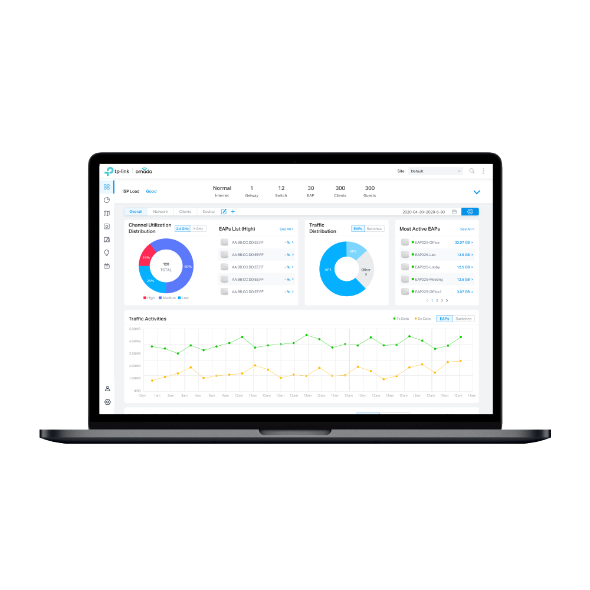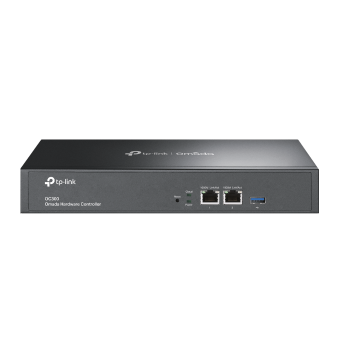How to Upgrade or Downgrade the Firmware of a TP-Link Omada Controller
Note: This FAQ applies to the Omada SDN Controller V5.8 and above
Before beginning, please review the following:
- After you have downloaded the firmware from the TP-Link website, please use a decompression software tool to extract the firmware file to your computer. If your operating system does not have a built-in decompression utility, you may use a tool such as WinZip or WinRAR to extract the firmware file to a folder.
- Do Not turn off the power or unplug the Ethernet cable from the Omada Controller during the upgrade process.
- It is recommended to upgrade the firmware of your controller via an Ethernet connection. Wireless is not recommended.
- Create a backup of the controller’s current configuration settings so you can restore them after the upgrade.
Firmware Upgrade Options:
Hardware Controller (OC200/OC300)
There are two methods to upgrade the firmware:
1. Local firmware upgrade
2. Cloud firmware upgrade
Preparation Steps:
- Verify the product model and hardware version of your Omada Controller to ensure the correct firmware version for your device is used. This information can be found on the label beneath the device. Attempting to upgrade using the wrong firmware may damage your device and/or void the warranty.
- Find and download the corresponding firmware according to the model number and hardware version from the TP-LINK official website https://www.tp-link.com/support/download/. Then, extract the bin file.
Method 1: Local Firmware Upgrade
Navigate to Global view → System Settings, then look for the Manual Upgrade option.
Use the Browse button to locate the extracted bin file, then click Upgrade.

Method 2: Cloud Firmware Upgrade
As seen in the screenshot below, locate and click the ![]() icon to initiate the cloud firmware upgrade.
icon to initiate the cloud firmware upgrade.

During this step, the status will change from Upgrading to Installing.



Note: It will take approximately 6 – 8 minutes to finish the firmware upgrade process. The controller will be offline during this time.
Another way to perform the Cloud Firmware Upgrade process is by navigating to Global View → System Settings, then click on Check for upgrade to upgrade the firmware via the cloud.

Software Controller
Navigate to Global View → System Settings, then click on Check for Updates to upgrade the firmware via local or cloud.

Another way to upgrade the Controller is to receive the Cloud Push, the official will cloud push the latest firmware once they have a new release.

Firmware Downgrade Options:
Downgrading the Hardware Controller (OC200/OC300)
Note: The firmware of a hardware controller can only be downgrade locally and manually. The Hardware Controller Section (see image below) is only available via local access. It will not appear via Cloud access.
To downgrade the firmware, execute the following steps:
- Find and download the corresponding firmware according to the model number and hardware version from the TP-LINK official website https://www.tp-link.com/support/download/. Then, extract the bin file.
Note: Firmware are listed newest to oldest
- Navigate to Global view → System Settings, then look for the Manual Upgrade option.
- Use the Browse button to locate the extracted bin file, then click Upgrade.

Downgrading the Software Controller
- Back up the current settings of the controller
- Total Uninstall the Software Controller and Do Not save the User Data

- Find and download the corresponding firmware from the TP-LINK official website https://www.tp-link.com/support/download/. Then, extract the bin file.
- Finish the Installation Wizard.
Notes:
- Downgrading involves a total reset process.
- Only backup files linked to the installed firmware version can be restored.
- If you do not have a backup associated to the installed Firmware version a fully manual setup is required
- We recommend creating and saving a backup file prior to any firmware upgrade
Is this faq useful?
Your feedback helps improve this site.
TP-Link Community
Still need help? Search for answers, ask questions, and get help from TP-Link experts and other users around the world.


1.0_normal_1592202397383a.png)